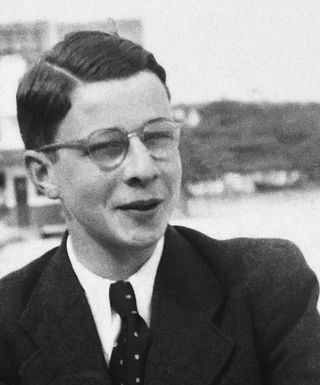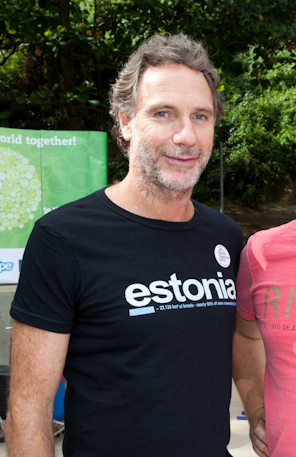
Oscar Ribeiro de Almeida Niemeyer Soares Filho, known as Oscar Niemeyer, was a Brazilian architect considered to be one of the key figures in the development of modern architecture. Niemeyer was best known for his design of civic buildings for Brasília, a planned city that became Brazil's capital in 1960, as well as his collaboration with other architects on the headquarters of the United Nations in New York. His exploration of the aesthetic possibilities of reinforced concrete was highly influential in the late 20th and early 21st centuries.

Lúcio Marçal Ferreira Ribeiro Lima Costa was a Brazilian architect and urban planner, best known for his plan for Brasília.

The Niterói Contemporary Art Museum is situated in the city of Niterói, Rio de Janeiro, Brazil, and is one of the city’s main landmarks. It was completed in 1996.

Cartier International SNC, or simply Cartier, is a French luxury-goods conglomerate that designs, manufactures, distributes, and sells jewellery, leather goods, and watches. Founded by Louis-François Cartier (1819–1904) in Paris in 1847, the company remained under family control until 1964. The company is headquartered in Paris and is a wholly owned subsidiary of the Swiss Richemont Group. Cartier operates more than 200 stores in 125 countries, with three Temples in Paris, London, and New York City.

Roberto Burle Marx was a Brazilian landscape architect whose designs of parks and gardens made him world-famous. He is accredited with having introduced modernist landscape architecture to Brazil. He was known as a modern nature artist and a public urban space designer. His work had a great influence on tropical garden design in the 20th century. Water gardens were a popular theme in his work. He was deftly able to transfer traditional artistic expressions such as graphic design, tapestry and folk art into his landscape designs. He also designed fabrics, jewellery and stage sets.

The Sambadrome Marquês de Sapucaí is a purpose-built parade area built for the Rio Carnival in Rio de Janeiro, Brazil. The venue is also known as Passarela Professor Darcy Ribeiro or simply the Sambódromo in Portuguese or Sambadrome in English. It is located in the downtown area of Cidade Nova in Rio de Janeiro, and is the place where samba schools parade competitively each year during the Rio Carnival. The parades attract many thousands of Brazilians and foreign tourists each year, and the structure is also used as a multi-purpose performance venue. The structures of the Sambadrome were designed by the architect Oscar Niemeyer (1907–2012), and represent his first major work after the end of the Brazilian dictatorship of 1964–1985.

The Gustavo Capanema Palace, also known architecturally as the Ministry of Education and Health Building, is a government office building in the Centro district of Rio de Janeiro, Brazil. As the first modernist project in Brazil, it is historically important to the architectural development of Modernism in Brazil and has been placed on Brazil's UNESCO tentative list.

The Complexo Cultural da República is a cultural center located along the Eixo Monumental, in the city of Brasília, Brazil. It is formed by the National Library of Brasília and the National Museum of the Republic. Both buildings were designed by Pritzker Prize-winning Brazilian architect Oscar Niemeyer and inaugurated in 2006.

Hans Stern was a Brazilian jeweler and businessman. He was dubbed the "king of the colored gems" by The New York Times and acclaimed by the international media. Founder of world-renowned luxury jewelry brand H.Stern.
Sergio Roberto Santos Rodrigues was a Brazilian carioca architect and designer. Along with Joaquim Tenreiro and José Zanine Caldas, Rodrigues was the pioneer to transform the Brazilian design in industrial design and make it known worldwide. He began his work in the field of architecture in the project of the civic center along with the also architects David Azambuja, Flávio Régis do Nascimento e Olavo redig de Campos.

The Hotel Nacional Rio is a skyscraper hotel in the São Conrado neighbourhood of Rio de Janeiro, Brazil. The 108-metre, 34-storey building was constructed from 1968 until 1972 and designed by famed architect Oscar Niemeyer, who was considered to be one of the key figures in the development of modern architecture. The hotel closed in 1995 following a steady decline in customers and the proximity to a crime ridden neighborhood. It was restored and reopened in 2017.

Igor de Vetyemy, is a Brazilian architect, urban planner, professor and designer. Considered to be one of the exponents of avant-garde Brazilian architecture, he represented the country, together with Paulo Mendes da Rocha and others, in 2008 London Festival of Architecture. In his book "Exhibit Design: The Future", the North American Critic Georges Jacob describes de Vetyemy as "an oxford educated proponent of bio-climate architecture, who believes in surprising the senses." With a focus in Sustainable architecture and another in formal space research, the architect's projects always intend to surprise human senses, emphasizing the sensitive character of architecture. Between 2000 and 2012, de Vetyemy studied in Rio de Janeiro, Oxford and Delft. In 2006, he became an Architecture Professor at Estácio de Sá University and, in 2008, at the Federal University of Rio de Janeiro. Having studied with Master Oscar Niemeyer himself in the beginning of the 2000s, the influence of the "reinforced concrete poet" is clear in the first years of his career. Manuel Sanches, a Brazilian architect, sociologist and Politic Sciences professor at the Federal University of Rio de Janeiro, considers Igor de Vetyemy's work "a demonstration that Brazilian contemporary architecture is worthy of the prestige it has since Niemeyer designed Pampulha(...) Surprising, innovative in the use of materials, in the proposal of constructive methods and, above all, in aesthetics.". But despite the strong influence of Brazilian Masters of tropical modernism, according to the British critic Richard J. Williams, Igor de Vetyemy represents a shift from that architecture in the approach to the vernacular sensuality of Brazilian architecture. In his words, "Niemeyer and his circle pretended that such commodification did not exist, but ended up, by default, endorsing it. Vetyemy recognizes the reality of the situation. Such frankness (...) suggests a less romantic, but more realistic, future.".

Shaun Leane is a British jewellery designer best known for his sculptural pieces created for Alexander McQueen. His eponymous jewellery brand is a four-time winner of the UK Jewellery Designer of the Year award.

YVEL is a privately held luxury jewelry company in Jerusalem. Founded and owned by Orna and Isaac Levy, the company is best known for its pearl jewelry.

Anna Maria Baldo Niemeyer was a Brazilian architect, furniture designer and gallery owner. The only daughter of Oscar Niemeyer, she worked with her father to design the civic buildings for Brasília, focusing primarily on interior spaces and decoration. When her father decided to make furniture to harmonize his structures with the design elements, she turned her interest to furniture designing. Her two most noted designs were the initial prototype called the "Alta" and the "Rio". In her later career, she ran an art gallery in Rio, which at one time was the only gallery in the city, and assisted in the creation of the Niterói Contemporary Art Museum.

The architecture of Brazil is influenced by Europe, especially Portugal. It has a history that goes back 500 years to the time when Pedro Cabral discovered Brazil in 1500. Portuguese colonial architecture was the first wave of architecture to go to Brazil.

Ara Vartanian is a Brazilian-Armenian jeweller and best known as the founder of his eponymous jewellery house.

Oskar Metsavaht is a Brazilian artist, academic degree in medicine, fashion designer environmental activist and Amazon guardian. Oskar's work expresses the theme of preserving the forest, water and the empowerment and protection of the peoples of the forest, as an artist, designer and activist. He is founder and creative director of Osklen, a Brazilian fashion brand, recognized as one of the forerunners of the New Luxury concept that strives for the fusion between ethics and aesthetics and advocates conscious fashion through the adoption of sustainable practices. Creative Director of OM.art studio, where he hosts his art studio, an exhibition space and the studio for the development and production of art projects. Metsavaht serves as UNESCO Goodwill Ambassador. Creator of Janeiro Hotel, located in Leblon, Rio de Janeiro. He is also on the advisory board of the Inhotim Institute and board member of Museum of Modern Art (MAM) of Rio de Janeiro. In 2014, Oskar Metsavaht was awarded as Knight of Ordem do Mérito Cultural medal from the Ministry of Culture (Brazil) an honorary order granted by the Federal Government to personalities and institutions that make relevant contributions to Brazil's culture.

Paul Clemence is an American-Brazilian photo-artist, focused on registering the expressive side of the built environment, particularly architecture. Beyond exhibiting his artwork, he lectures frequently and has authored several books.



















